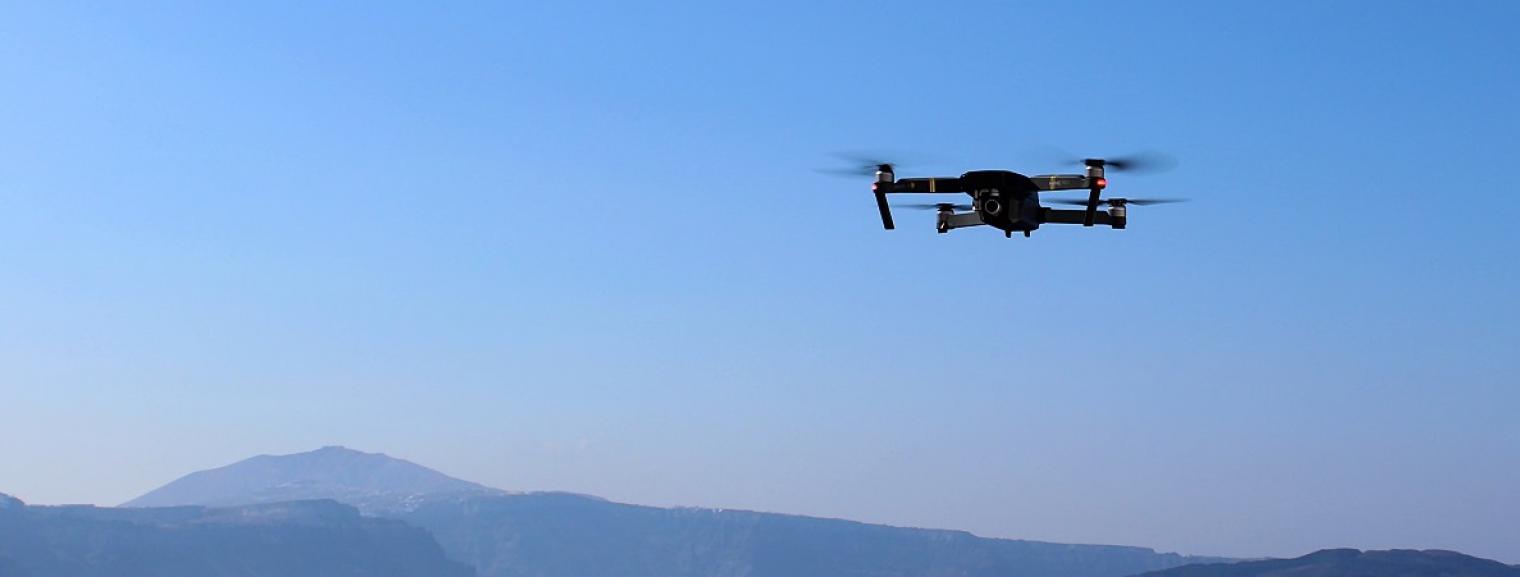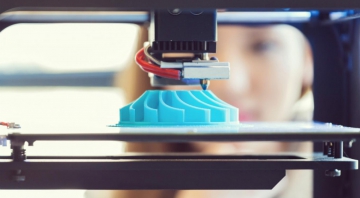Drones seem to be everywhere these days. From your local neighborhood enthusiast to Amazon Prime Air drone delivery service, more people and industries are beginning to embrace remote technology. The practical uses of drones in the workplace are continuing to expand and are utilized by the construction, oil and gas, security, photography, emergency management, and mining industries, just to name a few.
These new trends make sense: drone technology is part of consistent automation in the workplace, where employers can eliminate safety hazards by using technology to complete dangerous tasks instead of employees. Using drones can reduce the risks of accidents due to chemicals, heights, dangerous terrain, and more. However, they possess their own list of safety regulations and precautions that should be considered. As drones become more commonplace in EHS, here’s what you need to know about this rapidly evolving technology.
A Brief History of Drone Technology
Small drones used by common industries aren’t “drones” in the military sense of the word. These unmanned aerial vehicles (UAVs) are much lighter and compact, and operated by a pilot on the ground rather than by a pilot hundreds or even thousands of miles away. In recent years, civilian and industry UAVs have begun to outnumber military UAVs, moving into other applications such as product deliveries, aerial photography, agriculture, and even drone racing.
Possibilities of Drones in the Workplace
The first, and perhaps most obvious, benefit drones have in the EHS field is increased safety. If a project site contains asbestos, a large release of toxic chemicals, or even a fire, drones can safely survey the damage and the information can help inform emergency responses. Similarly, projects or accidents occur in a rugged or remote area that ATVs, helicopters, or employees can’t safely access, drones can safely maneuver there.
Drone technology also provides unmatched visual observations of entire projects and landscapes. Many in the EHS field have begun to couple LiDAR (Light Detection and Ranging) technology with drones to conduct flyover topography assessments (think of it as a survey from the sky). For instance, the drones can observe volumes of soil changing from week to week, or day to day at an expansive, outdoor project site. This method of project documentation provides a much more accurate and real-time way to deliver the project results and timeline back to clients, regulators, and stakeholders, who may be across the country from the actual site.
In the oil and gas fields, FLIR (Forward-Looking Infrared) cameras have also been combined with drones to detect emissions irregularities. Similar to an X-Ray, FLIR cameras can detect differences in warmth. The drone, and camera, detect color (warmth) differences in emissions, providing companies ways to track their emissions and identify potential leaks. Future generations of this equipment may be able to quantify leaks.
A Few Drone-Use Precautions
Although drones are unmanned aircrafts, it’s important to remember that human error is still possible, and companies should still keep safety regulations in mind. The Federal Aviation Administration (FAA) regulates the commercial use of drones under 14 CFR Part 107. While the entire document is several pages, the FAA has provide a summary that outlines a few of the major rules. These include…
- UAVs must weigh less than 55 lbs.
- UAVs must always remain within the Visual line-of-sight (VLOS) of the pilot
- UAVs can only be operated during daylight
- Flying over people directly is prohibited
- Pilots must register UAV and perform a pre-flight checklist
Although these rules are easy to find online, they do take some digging (and lots of reading) through the document to ensure compliance.
With any new technology, costs can take a while to fall. Not only is the technology itself expensive and subject to damage in bad weather or extreme terrain, but it also takes time for pilots to train and receive a license. But, companies seeking to accomplish similar tasks also incur the costs of helicopters, ATVs, PPE, or even employee accidents, so the long-term safety and fiscal benefits may be worth it.
Instead of shouldering most of these costs, it may be more reasonable for your company to consult with drone professionals. Additionally, risk management best practice would be to create a UAV/Drone defined practice or process for your EHS management system.
Drones may be another step in a more automated world, decreasing safety risks for employees. However, before lifting off, make sure your company knows the risks and necessary guidelines. New technologies, regulations, and best practices are constantly changing in the EHS field, but Antea Group strives to stay on top of new findings and deliver industry trends and updates back to you. For more information on how drone technology can help your company and practices, contact us.
Want more recent EHS&S news? Visit our blog, or follow us on LinkedIn.
Want more news and insights like this?
Sign up for our monthly e-newsletter, The New Leaf. Our goal is to keep you updated, educated and even a bit entertained as it relates to all things EHS and sustainability.
Get e-NewsletterHave any questions?
Contact us to discuss your environment, health, safety and sustainability needs today.





